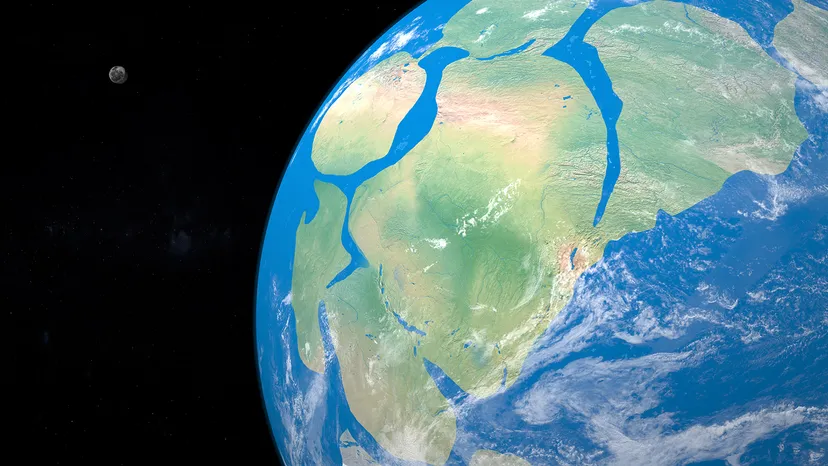Earth may have secret ‘supercontinents’ likely dating back billions of years
A recent discovery is shattering the assumption that the Earth ‘s mantle, a layer sandwiched between the crust and the molten core, nothing more than a homogenous expanse of solid rock, stretching approximately 2,900 kilometres beneath our feet.
In a new study, researchers unveiled that the existence of massive unmixed regions in the mantle, like lumps of chocolate in a cookie, bringing light to two “supercontinents” buried deep beneath the surface, CNN reported.
One of these colossal landmasses is located underneath Africa, while the other lies beneath the Pacific Ocean.
Earth may have secret ‘supercontinents’ likely dating back billions of years The researchers’ findings — obtained using a new method to analyse seismic data from earthquakes — suggest that these ancient supercontinents may play a crucial role as anchors in the mantle and could be much older than previously thought.
The discovery, which was recently published in the journal Nature, adds to a growing body of evidence suggesting that the rocky mantle isn’t as well-stirred by Earth’s internal churning as once believed.
The presence of hidden structures or pockets of unblended material, like supercontinents, may shape mantle activity, including plate movement, in ways that remain largely unexplored.
Over the decades, seismic data revealed that these supercontinents make up about 20% of the mantle-core boundary but little was known about these structures.
“Their origin and whether they are long-lived structures — it’s widely debated,” said Dr Sujania Talavera-Soza, lead author of the new study and a geosciences and seismology researcher at Utrecht University in the Netherlands.
Previous studies indicated that seismic waves slow down by approximately 2% as they pass through large low shear velocity provinces (LLSVPs).
Velocity loss in seismic waves suggested that these mantle zones were hotter than the rocks around them, Talavera-Soza said. But it was unknown whether the LLSVPs differed structurally from nearby regions.
In the new study, researchers adopted a different approach by examining the attenuation, or intensity, of seismic signals as they traveled through the mantle to see how much energy the vibrations from quakes lost.
The new model showed that while seismic waves’ velocity dipped when they reached LLSVPs, the waves didn’t lose much energy. By comparison, there was significant damping among the cooler graveyards around the LLSVPs.
Researchers believe those differences come down to the comparative ages of the structures.
“From this study, I think there will be a lot of extra research that might answer a lot of outstanding questions that have been confusing scientists for ages,” said study coauthor Dr Arwen Deuss, a professor of structure and composition of Earth’s deep interior at Utrecht University.

